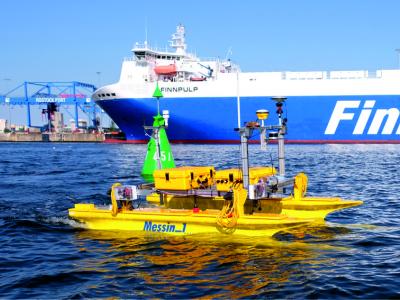Machine Learning

The millimeter-wave radar has the ability to sense the subtle movement of hand. However, the traditional hand gesture recognition methods are not robust in the scenario with dynamic interference. To address this issue, a robust hand gesture recognition method is proposed based on the self-attention time-series neural networks. Firstly, the original radar echo is constructed in terms of frame, sequence and channel at the input terminal of network.
- Categories:
 440 Views
440 ViewsThe measurement and diagnosis of the severity of failures in rotating machines allow the execution of predictive maintenance actions on equipment. These actions make it possible to monitor the operating parameters of the machine and to perform the prediction of failures, thus avoiding production losses, severe damage to the equipment, and safeguarding the integrity of the equipment operators. This paper describes the construction of a dataset composed of vibration signals of a rotating machine.
- Categories:
 2635 Views
2635 Views
Power system state estimation (PSSE) plays a vital role in stable operation of modern smart grids, while it is vulnerable to cyber attacks. False data injection attacks (FDIA), one of the most common cyber attacks, can tamper with measurement data and bypass the bad data detection (BDD) mechanism, leading to incorrect PSSE results.
- Categories:
 1014 Views
1014 Views
One of the industries that uses Machine Learning is Radiation Oncology
- Categories:
 169 Views
169 ViewsFecal microscopic data set is a set of fecal microscopic images, which is used in object detection task. The datasets are collected from the Sixth People’s Hospital of Chengdu (Sichuan Province, China). The samples were went flow diluted, stirred and placed, and imaged with a microscopic imaging system. The clearest 5 images were collected for each view of each sample with Tenengrad definition algorithm. The dataset we collected includes 10670 groups of views with 53350 jpg images. The Resolution of images are 1200×1600. There are 4 categories, RBCs, WBCs, Molds, and Pyocytes.
- Categories:
 682 Views
682 ViewsToday, the cameras are fixed everywhere, in streets, in vehicles, and in any public area. However, Analysis and extraction of information from images are required. Particularly, in autonomous vehicles and in smart applications that are developed to guide tourists. So, a large dataset of scene text images is an important and difficult factor in the extraction of textual information in natural images. It is the input to any computer vision system.
- Categories:
 916 Views
916 ViewsThis dataset consists of the training and the evaluation datasets for the LiDAR-based maritime environment perception presented in our journal publication "Maritime Environment Perception based on Deep Learning." Within the datasets, LiDAR raw data are processed using Deep Neural Networks (DNN). In the training dataset, we introduce the method for generating training data in Gazebo simulation. In the evaluation datasets, we provide the real-world tests conducted by two research vessels, respectively.
- Categories:
 1727 Views
1727 Views
This dataset contains a collection of videos consisting of satellite imagery augmented with 3D ship models, accompanied by the ships' corresponding AIS data. The intention of this dataset is for detecting dark ships, which are sea vessels acting maliciously, often while spoofing their AIS data. Multiple datasets exist that consist of satellite imagery of ships, however this dataset has the advantage of including each ships' corresponding AIS data. The simulated ships include both normal and anomalous behavior, whether the anomalous behavior is benign or malicious.
- Categories:
 484 Views
484 Views
There exist several commonly used datasets in relation to object detection that include COCO (with multiple versions) and ImageNet containing large annotations for 80 and 1000 objects (i.e. classes) respectively. However, very limited datasets are available comprising specific objects identified by visually imapeired people (VIP) such as wheel-bins, trash-Bags, e-Scooters, advertising boards, and bollard. Furthermore, the annotations for these objects are not available in existing sources.
- Categories:
 243 Views
243 Views




